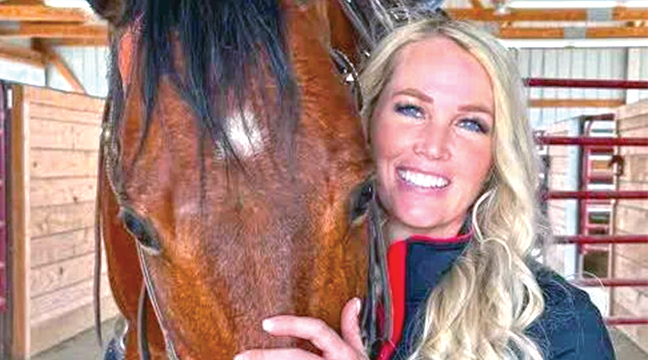A group of women got together at the United Methodist Church last week for tea, cookies, and a chance to share stories about Christmases in Clearwater over the years.
Hosted by Cynthia Frank-Stupnik and Becky Frank, and sponsored by Daughter of the Middle Border and Jennie’s Corner, the gathering was patterned after lyceum events that were popular around the country during the 19th and early 20th centuries.
Organizations would sponsor public programs and entertainment, the purpose of which was to improve adult education. Clearwater was known for the numerous lyceums held in its community.
Like all communities, Christmas was an important time in Clearwater. The local grade school held a Christmas play every year, which was eventually moved to the Masonic Hall because it had a stage and had become a community event.
Kids would slide down Blacksmith Hill and skate on the Mill Pond and the town skating rink that was created by flooding it with water.
Main Street would be festively decorated, and Christmas music would be played by one of the stores, the women believe it was Kniss Grocery, which could be heard out in the streets. Live Christmas trees would be lined up against the wall at Kniss’ for residents to purchase. An outside nativity scene would be set up on one of the streets.
The Recreation Department would hold a Christmas program for the kids; the women remember Clearwater resident Evelyn Heaton dressing up as Santa and handing out paper bags filled with candy.
For years groups of kids would get together and go from house to house caroling, making sure to visit elderly residents and the nursing home along the way. They would get invited in for cookies and cocoa for their efforts.
Kitty Johansen shared the Christmas she received a pair of size eight used ice skates when she was young. They were much too large for her, so she stuffed them with socks to make them fit, and her mom taught her to skate on the Mill Pond by holding on to a kitchen chair.
The first Christmas Julyann Granzow remembers she was around five, and her brother Robert took orange crates and made her a doll bed. He told her he was making shelves and gave her the job of sanding. She didn’t realize he was making a doll bed for her until she opened it at Christmas.
She still has that doll bed and doll she received along with it, as well as the music box her brother gave her when she was older.
The winter before they moved to Clearwater in 1947 was extremely cold, and Granzow and her brother came down with measles, then the flu, and finally chicken pox. Her mom had to take care of everything while her dad was working out of town during the week.
Her mom declared she wasn’t spending another winter without electricity or running water, so they moved from Hasty to the Avery house in Clearwater. There they had a furnace, running water and a bathroom, no more going outside.
Their Christmases were very Scandinavian; treats would include Sandbakkels, Fattigmann and Berlinerkranser (Berlin Wreaths). Her mom didn’t like lutefisk or lefse so they had oyster stew for Christmas Eve. Granzow had to eat at least three before Santa would come.
Nancy Moll’s family always had lutefisk at Christmas that came from the Silver Creek locker. Her mom would soak it on the porch for a few days before cooking, and Moll would go out and smell it and poke at it. They would eat it on Christmas Eve with potatoes and white gravy.
St. Nicholas and Rupert came to Stupnik and Frank’s house every year; a scary experience for young children. They were big and ugly; St. Nickolas had a pointy hat and Rufus would be dressed like a monk and covered in soot. Boys who were bad, like their brother, had to go in their bag.
Granzow remembers local teacher Rachel Kniss gathering groups of Clearwater children around her every Christmas to tell the story of The Littlest Angel.
“That was Christmas to me,” said Granzow. “She was quite a storyteller.”








